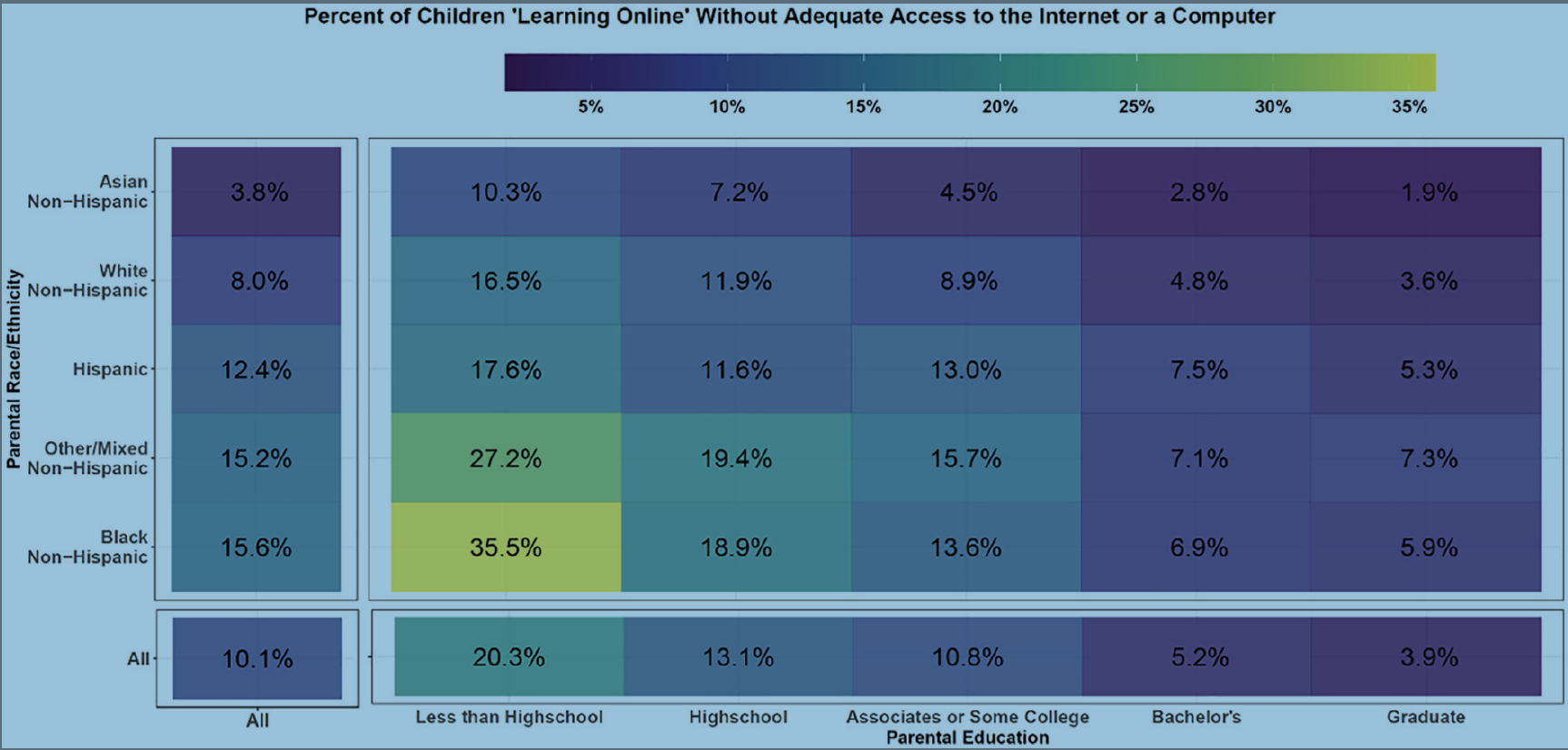
Figure 1. Percentage of children (ages 0–18 years) learning online whose parents reported that they had inadequate access to the Internet or a computer or other electronic device used for educational purposes in the fall 2020 school period (August 19 to October 26), shown by parental race and parental education gradient.
Friedman, J., York, H., Mokdad, A. and Gakidou, E. (2021) U.S. Children “Learning Online” during COVID-19 without the Internet or a Computer: Visualizing the Gradient by Race/Ethnicity and Parental Educational Attainment Socius, Vol. 7, February 17
This paper is so short (three pages including extensive author biographies) that you should read it yourself.
Methodology
The supplement to the report provides detail of how the sample was drawn. Data was accessed from the U.S. Census Household Pulse Survey (U.S. Census Bureau 2020). The U.S. Census data were drawn from a weighted representative sample of just over 500,000 respondents/households. The sample size of the subset of households with children actively participating in online learning was 72,179. The sample therefore appears to me to be both representative and large enough to be statistically reliable. (Note this is a correction to an earlier posting of my blog, which stated that the supplement was not available. The link has now been provided in the article.)









 Dr. Tony Bates is the author of eleven books in the field of online learning and distance education. He has provided consulting services specializing in training in the planning and management of online learning and distance education, working with over 40 organizations in 25 countries. Tony is a Research Associate with Contact North | Contact Nord, Ontario’s Distance Education & Training Network.
Dr. Tony Bates is the author of eleven books in the field of online learning and distance education. He has provided consulting services specializing in training in the planning and management of online learning and distance education, working with over 40 organizations in 25 countries. Tony is a Research Associate with Contact North | Contact Nord, Ontario’s Distance Education & Training Network.

